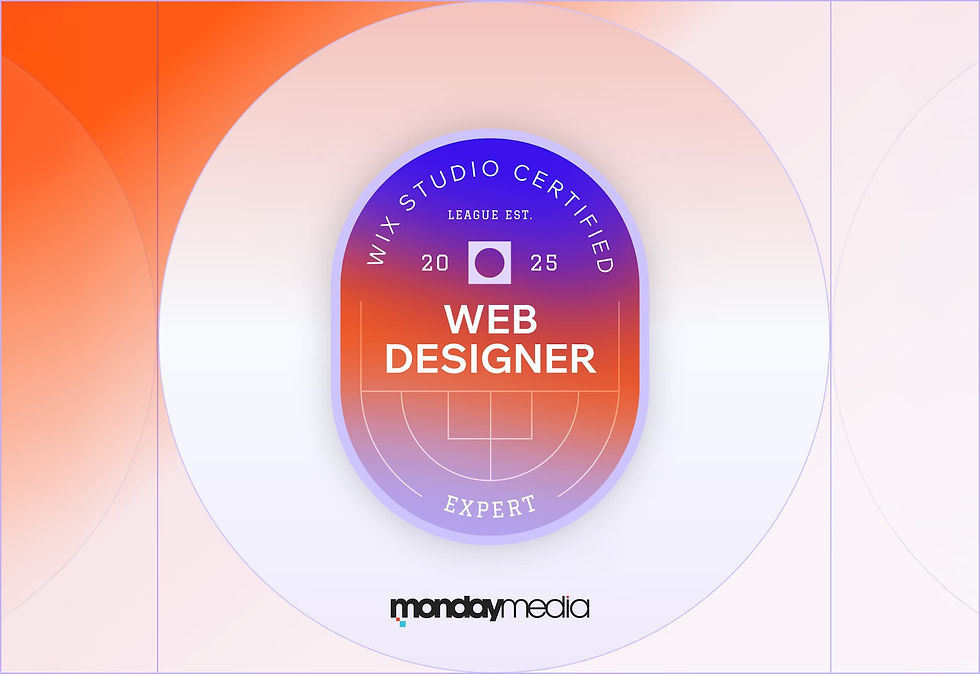Why You Need a Sound Design Video
- Paul Dean

- Apr 23, 2021
- 4 min read
We know sound design - and we can prove it.
Whenever you’re watching a movie, television show, or any other type of video, there are a lot of visuals that communicate to you a plethora of messages such as narrative, emotion, environment - the list goes on. But there’s something among those aspects that goes a little less noticed, and that is the sound design that is intertwined with those striking visuals you’re enthralled with.

Sound design is what is known as a type of invisible design. But you can hear the booming crashing cars in action movies and the swelling music in cartoon musicals just fine! So what do I mean exactly when I say “invisible”?
Before I get into it, take a look at this short video we made here at Monday Media for Ellenbrook Christian College...
What sounds stood out to you? Even though there are plenty of sounds that are loud and obvious, such as the music and talking, there is a lot of covert sound that you don’t notice. And even with those obvious sounds, there's a hidden narrative behind it that your brain is subconsciously absorbing without you realising.
The implementation of particular sounds at particular times in particular ways are all very, very intentional. When it comes to making videos for a business, we hold priority in making sure your clients get the message you want to send, so let’s get a little bit into how we go about that.
To make the most of our sound design, we group types of sounds into two categories: diegetic and non-diegetic.
Non-diegetic sound is the hard (but fun) part! Us here at Monday Media get to put all these sounds into your video ourselves - and there are a lot of decisions to make! It is sound wherein its source appears outside of the frame. In the Ellenbrook Christian College video, this would include the sound effects and the music, both of which have their own special purposes. When we implement sound effects, we are communicating combinations of material, texture, and environment subconsciously. You don’t notice it, but this type of invisible design adds additional context to your visuals that allow you to create a more fleshed out and immersive experience to the content you are watching.

A little bit of insight into what it takes to cut diegetic and non-diegetic audio to coincide with your video content...
Take another look at the video with this in mind… notice the sound effects in the beginning linking the sound design to the visuals in the animation, instantly establishing the beginning of a “day in the life” narrative with a subtle ticking clock we all recognise when getting ready for school, as well as a soft sense of anticipation that grabs the viewer and sits them down to keep watching. When cut to be in sync with the visuals, we now have all your senses in check going forward.
Music is a whole other can of beans! Picking the perfect track is so important as it is the vehicle that harnesses the emotion you want your viewers to experience. Not only that, but cutting it and editing it to evoke emotion in conjunction with the footage presented requires quite a bit of nitpicking, such as the way the music tends to rise and crescendo when focusing on footage of the children, and when it falls quiet to give emphasis on particularly striking clips. That’s just a couple of ways in which sound can “invisibly” communicate all this information to a viewer!
Now, diegetic sound is sound wherein its source appears in the frame you are viewing. In the Ellenbrook Christian College video, this would include the children and teachers talking in-shot, as well as the naturally occurring sounds of footsteps and instruments. Although we don’t have as much control over this particular type of sound, we still make “invisible” decisions that shape the way a viewer absorbs information presented - and that is mainly when and how we decide to play this predetermined sound. What volume is it at which time? What footage does it play over and when? What language is being used at what point? These are some questions to ask when putting a whole bunch of sounds together - and the answers aren’t too easy!
No matter how much you have spent on all your sound editing software and hardware, you're not going to get very far without the knowledge of how to use it. Monday Media has the perfect combo of industry professional hardware and software as well as the brains needed to get them functioning in the most effective way possible.
Let's wrap this up.
There’s a lot that goes behind video creation, and the sound behind it is just as big a component as any other. The combination of non-diegetic and diegetic sounds are carriers of how your clients are going to read and interpret your business… so do it right!
Want to work with the sound experts here at Monday Media? Call Paul on 0447 276 379




